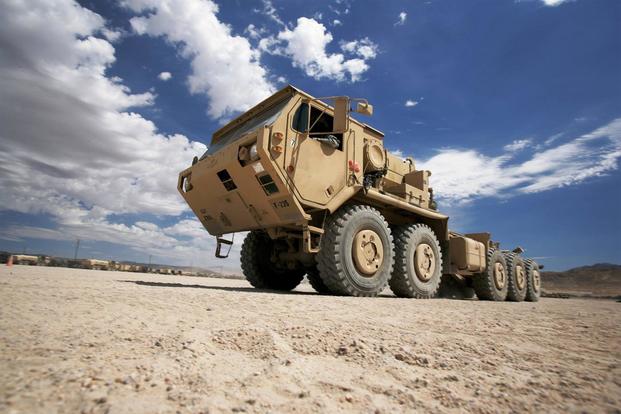The U.S. Army has awarded a $49.7 million contract to Robotic Research LLC for autonomous kits to be tested on large supply vehicles in an effort to one day send unmanned resupply convoys across the battlefield.
The three-year award is part of the Expedient Leader Follower program, which is designed to extend the scope of the Autonomous Ground Resupply program, according to a recent release from Robotic Research.
Army leaders have pledged to make robotics and vehicle autonomy one of the service's top modernization priorities.
The Next Generation Combat Vehicle program will be designed around manned and unmanned combat vehicles, giving commanders the option to send robotic vehicles against the enemy before committing manned combat forces, Army officials said.
The service plans to build its first Robotic Combat Vehicle technology demonstrator in three years. The early RCVs will help program officials develop future designs of autonomous combat vehicles, officials added.
Army Secretary Mark Esper has stressed that autonomous vehicles have a definite place in what became one of the most deadly mission during the Iraq War -- resupply convoy duty.
The Army lost "too many" soldiers to improvised explosive device attacks driving and riding in resupply convoys, he said.
Under the Expedient Leader Follower program, the autonomous kits, made by Robotic Research, will be installed on Army vehicles, such as the Oshkosh PLS A1s. A series of the optionally manned vehicles will autonomously follow the path of the first, manned vehicle, the release states.
The program follows the "Autonomous Mobility Applique Systems (AMAS), Joint Capability Technology Demonstration (JCTD), and [Autonomous Ground Resupply] programs to develop unmanned prototype systems that address the needs of the Leader Follower Directed Requirement and Program of Record," the release states.
The AGR architecture is being developed to "become the de-facto autonomous architecture for all foreseeable ground robotic vehicles," according to the release.
"We are deeply honored to have been selected to perform this critical work for the U.S. Army," said Alberto Lacaze, president of Robotic Research. "The Robotic Research team shares the Army's commitment to rapidly fielding effective autonomy solutions to our nation's soldiers."
Matthew Cox can be reached at matthew.cox@military.com










